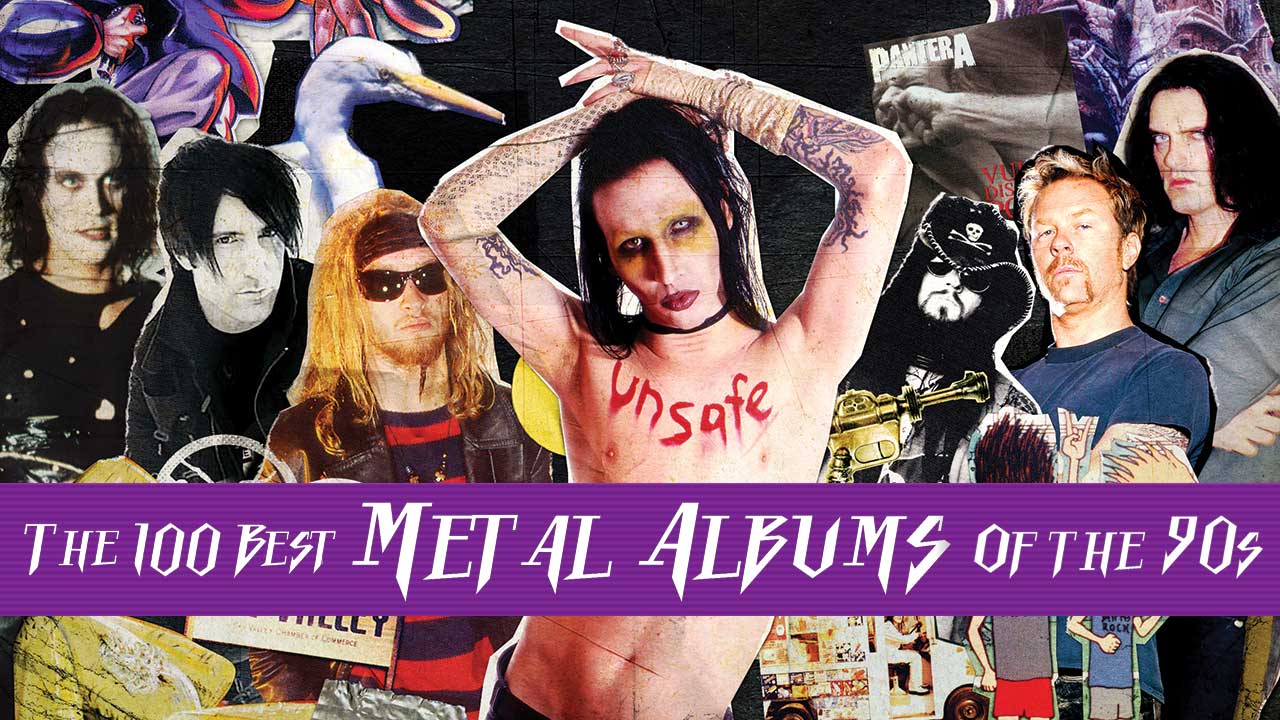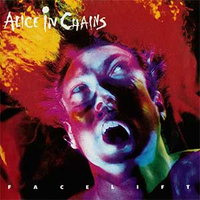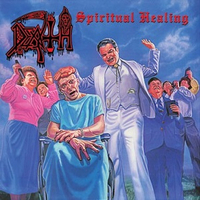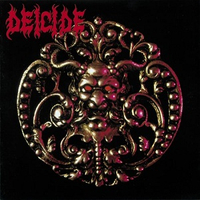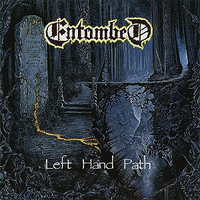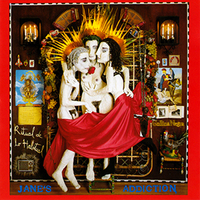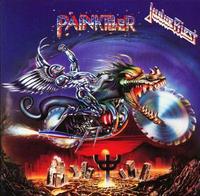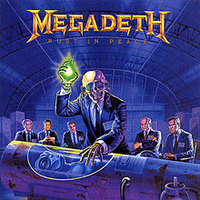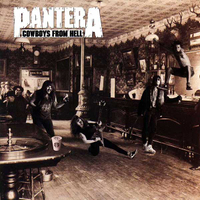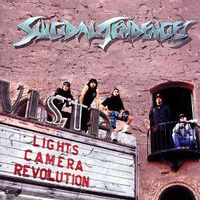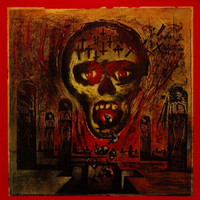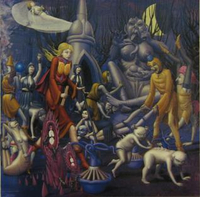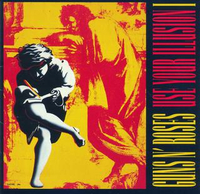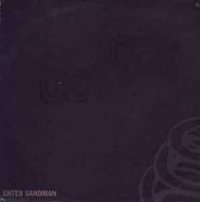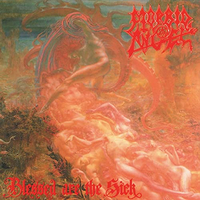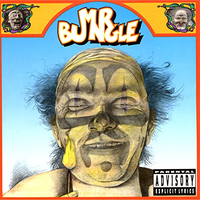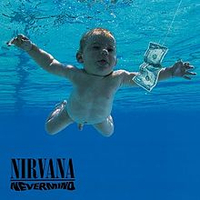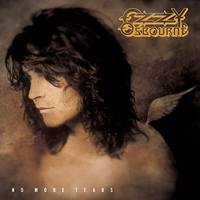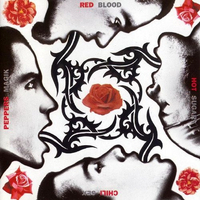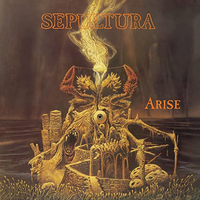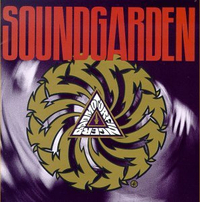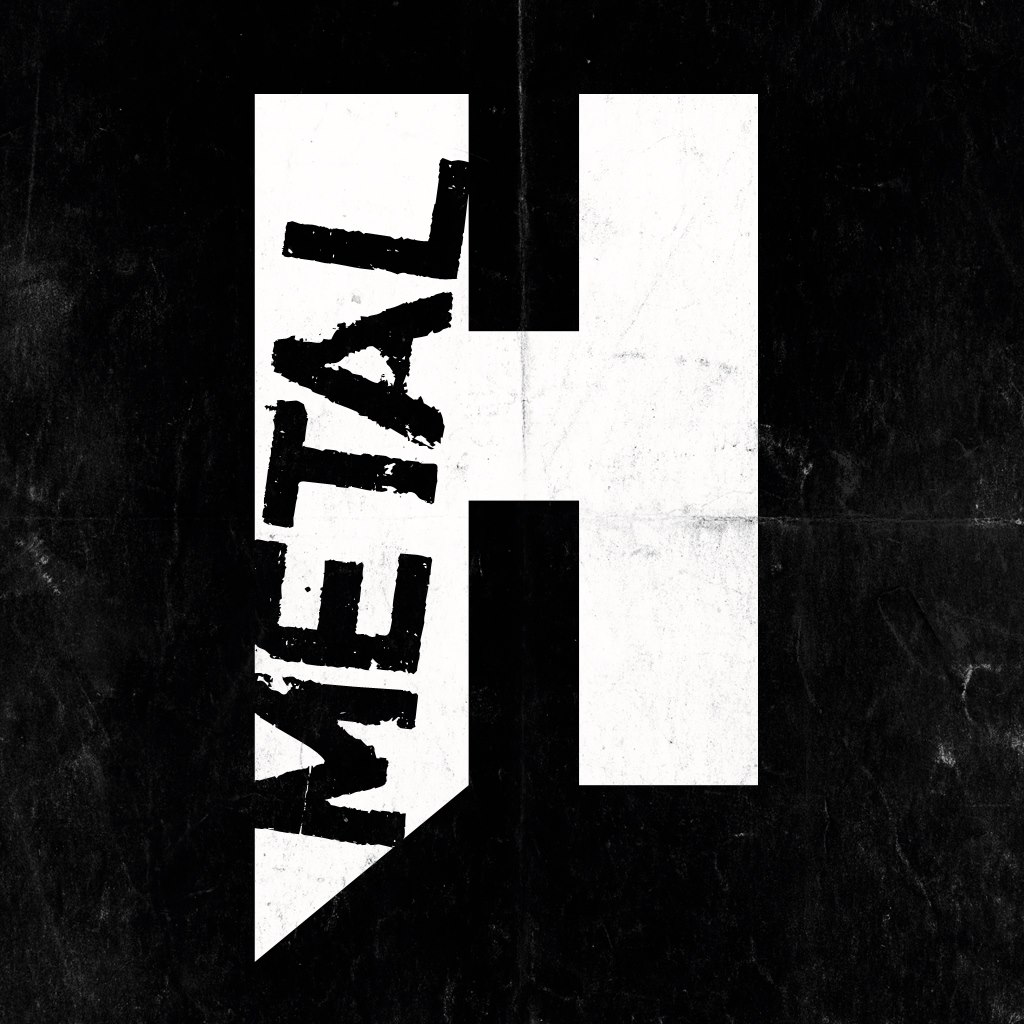From the start of grunge’s road to global domination to the rise of the nu metal juggernaut, the 90s was truly a golden age for metal.
For some bands, it was a matter of carrying on, impervious to trends. For others, it was a case of seeing which way the winds of change were blowing and trimming their sales accordingly.
Like any living organism, metal evolved in the 90s. Bands such as Pantera and Machine Head took the thrash blueprint and added guts and groove. Others – namely the host of Satanic-themed bands emerging from the snowy wastes and dark forests of Scandinavia – simply turned up the extremity, ushering in the black metal movement.
Yet others still began to experiment with the form, whether that was Brazil’s Sepultura experimenting with tribal sounds or Britain’s Paradise Lost layering a gothic approach on top of their original death metal template.
The 90s was a time when the genre opened up its padlocked gates to new sounds and new visions. Its past was assured. But now it had a future too.
Here, your definitive guide to the craziest decade in metal history, via the 100 albums that mattered the most.

Alice In Chains - Facelift
Alice In Chains' debut album, Facelift, was the first blockbuster grunge album, the first grunge album to leave an impression on the charts, thanks to the success of unexpected hit single Man In The Box.
It was also one of the most influential. Its steely riffs and haunting harmonies were imitated but never bettered, capturing the spirit of a changing age and paving the way for Nevermind, Ten and Badmotorfinger, all of which followed AIC’s debut up the charts in the ensuing months.
While the musicianship was creatively crisp and morbidly vital, it was their uniquely troubled singer Layne Staley who gave intimacy and vulnerability to the songs. Without Staley, it’s unlikely that the band could possibly have fulfilled their obvious potential.
Death - Spiritual Healing
Death founder Chuck Schuldiner was always ahead of the pack. And unlike many of his death metal contemporaries, he was a deeply complex person. By the time Death released 1990’s Spiritual Healing, he was already beginning to outgrow the scene he had helped spawn.
His band’s third album showed death metal could replace guts’n’gore with brains’n’ambition. It marks the point where Schuldiner largely jettisoned the adolescent lyrical concerns of Scream Bloody Gore and its follow-up, Leprosy, in favour of a deeper – though no less vivid – look at the human condition.
Deicide - Deicide
With an inverted cross branded into his forehead, vocalist and bassist Glen Benton was Satanic controversy incarnate. Deicide’s death-tastic debut matched the hype.
Raw with great riffs, chaotic solos and an incredible irrepressible anger – not to mention the murky production – the album set the bar for extreme metal in the early 90s, and came to represent the scene for many nascent metalheads.
Entombed - Left Hand Path
Entombed hadn't yet perfected the death'n'roll formula that would make them a serious force to be reckoned with, but Left Hand Path remains one of the most gruesomely perfect pieces of Swedish death metal ever committed to tape.
Most importantly, the Swedish sluggers’ stellar debut showed the Yanks didn’t have the monopoly on white-hot death metal. Bands are still ripping it off 30 years on.
Jane’s Addiction - Ritual de lo Habitual
Alternative rock legends Jane's Addiction broke the alt-rock mould when they released their second album, Ritual De Lo Habitual, in 1990. With scant regard for LA's spandex-clad genre conventions, they turned rock'n'roll on its head by throwing elements of funk, goth and punk into the mix with complex and catchy as hell songwriting.
As such, it isn't hyperbolic to say vocalist Perry Farrell bust open the doors for alternative rock with this shamanic second album, and – while rock historians might tell you another story – are the band who really broke alt-rock to the masses. Seriously: without it, Nirvana would still be playing Seattle bars.
Judas Priest - Painkiller
The end of Rob Halford’s first period as Judas Priest frontman arrived shortly after the release of one of their greatest albums.
Their first record of the 90s matched anything they’d done before. Heavy, focused, cutting edge, this was an album for the times. And that title track… holy fucking shit.
Painkiller rips from start to finish and single-handedly redefined the sound of traditional heavy metal in the process. There are literally hundreds of bands out there peddling this exact same sound, but no one will ever top the original.
Megadeth - Rust In Peace
Something magical happened when Dave Mustaine and David Ellefson joined forces with guitarist Marty Friedman and drummer Nick Menza.
Rust In Peace is one of those albums: a masterpiece with no obvious flaws, not an ounce of filler or flab and some of the most obscenely thrilling moments in all of recorded metal history. Holy Wars… The Punishment Due, Hangar 18 and Tornado Of Souls may be the obvious highlights, but the entire record still leaps from the speakers 30 years later, sounding supremely arrogant and startlingly powerful.
But beyond its hallowed contents, Rust In Peace is a seminal work because it completely upgraded metal’s sonic vocabulary, heroically raising levels of precision, technicality and compositional suss and kick-starting the ‘90s with a sustained blast of immaculate, state-of-the-art savagery that continues to send shockwaves through the metal world today.
Pantera - Cowboys From Hell
Breakthrough album or ‘real’ debut release, it depends on your point of view.
Either way, there’s absolutely no doubt about the impact Cowboys From Hell had on Pantera and on heavy metal itself. In place of the traditional approach of Power Metal is an unbridled attack on the senses.
Diamond Darrell (as he was still known) proves to be a hitherto unknown virtuoso, calling up the kind of blinding riffage and frenetic soloing he had never hinted at before. Elsewhere, Phil Anselmo, whose fondness for New Orleans’ thrash metal band Exhorder was a clear influence, adopts an even greater range than he had on his Power Metal debut.
The highlight is without a doubt the seven-minute-plus Cemetery Gates, but it’s pushed all the way by the title track and Primal Concrete Sledge. A new dawn for extreme, and extremely good, heavy metal.
Suicidal Tendencies - Lights Camera Revolution
Not content with mastering punk rock and thrash metal, the Suicidal Tendencies ethos of “anything goes” enabled them to be at the front of the queue when metal started dabbling in funkier waters.
Alongside the genre-bending likes of Faith No More, Red Hot Chili Peppers and Living Colour, Mike Muir and co. chucked slap bass into the mix for 1990’s hugely successful Lights… Camera… Revolution! and delivered one of funk metal’s sharpest anthems in the shape of the evangelist-baiting Send Me Your Money in the process.
Suicidal Tendencies completed their transformation from punk-skate-hoodrats to hardcore-funk-thrash kings here.
Slayer - Seasons In The Abyss
The last studio album for drummer Dave Lombardo until 2006, while Seasons... offered no discernible change in direction from what had gone before, the band’s strength of vision was clear.
Many believed that Seasons In The Abyss was the sound of Slayer stuck in a rut. However, this was actually a band in a groove, knowing precisely what they should be doing, and how to deliver it.
Warfare is a recurring theme in Slayer songs, and Hallowed Point, Expendable Youth and the opening blitzkrieg War Ensemble all resonated powerfully at a time when US forces were engaged in the first Gulf War. Equally morbid were Dead Skin Mask and the title track, although the latter had some diehard fans crying ‘sell-out’. Not that anyone would have said that to Kerry King's face.
At a time when some were saying thrash was dead, Slayer were still brimming with ideas.
Cathedral - Forest Of Equilibrium
No one expected Napalm Death’s ex-singer to reinvent himself as a doom icon. But that’s what Lee Dorrian did on Cathedral’s landmark debut.
“Morosely magnificent slow-motion doom,” promised the tagline, confusing many who came to the album expecting more of the same from Dorrian’s stint fronting the grindcore pioneers, or Gaz Jennings’ history in flippant thrashers Acid Reign.
But, the result of the pair's mutual doom obsession – twisted by their own forward-thinking extreme impulses – Forest Of Equilibrium remains truly a unique, pivotal recording.
Guns N’ Roses - Use Your Illusion I & II
By their release in September 1991, both volumes of Guns N’ Roses’ Use Your Illusion had become the most anticipated follow-up to a debut that our fuddled old minds can recall.
Typical of being the biggest band in the world, Guns N’ Roses went for it in a major way. Some might say too much, for the overblown nature of Use Your Illusion went some way to alienating people against the band – though that wasn't a difficult feat in Axl Rose’s case.
If the first disc showed a band ripping hard between what they were best at (bluesy hard rock) and what their singer wanted (Elton John meets Queen), the second of the two releases (AKA the blue and purple one) might not have rocked as hard, but its variety proved it had its very own spicy life.
From both volumes one could create a killer album – possibly to rival the debut – but both of these were bloody brilliant on their own.
Buy Use Your Illusion I on Amazon | Buy Use Your Illusion II on Amazon | Listen on Spotify
Metallica - Metallica
With 15 million copies sold in the US alone, Metallica’s fifth album is the one that made them superstars. Not by accident, but by design.
Metallica – commonly known as ‘The Black Album’ – was a bold move, a shift from thrash metal to mainstream rock, with shorter, slower, more direct songs, and most controversially, a slick production from Bob Rock, whose previous clients included Bon Jovi and Mötley Crüe.
Hardcore fans feared Metallica had sold out, but the huge riffs of Enter Sandman and Sad But True proved they’d lost none of their power, while the two rock ballads, The Unforgiven and Nothing Else Matters, had genuine emotional weight. The gamble paid off.
Morbid Angel - Blessed Are The Sick
After the chaotic energy rippling through their debut album, the second album from Morbid Angel sealed their place at the head of the death metal pack.
Blessed Are The Sick showed the Tampa, Florida legends learning to bring a bit more control to their breakneck sound, but within the album's sputtering blasts, half-time crawl and Trey Azagthoth's luminous leads is a feast of death metal DNA.
Add in lashings of lustful devil worship and an intense fascination with evil and your early 90s extreme metal boxes are pretty much all ticked.
Mr Bungle - Mr Bungle
Faith No More sounded like Abba next to Mike Patton’s *other* band.
Their debut album was unsettling and utterly, utterly brilliant. It showed a generation of burgeoning noiseniks that heavy music didn't have to be heavy all of the time – instead it could be cinematic and expansive, it could be funny, it could be technical and non-technical, all within the same song.
Fun, offensive, dark and chaotic and a blueprint for a generation of musicians whose minds had really been opened to how experimental and agenda-setting heavy music could really be.
Nirvana - Nevermind
“I want to sound heavy.”
This was the sole instruction Kurt Cobain issued to producer Butch Vig on May 2, 1991, the day the producer sat down behind the Neve soundboard at Sound City Studios in Van Nuys, California to start the tape rolling for the recording of Nirvana’s second album, Nevermind.
You cannot overstate the influence Nirvana have had on the geography of music since the release of that album in 1991.
In the UK, the trio made alternative, heavy music dominate the mainstream for the first time since punk. In the US they did the same… for the first time ever. In one fell swoop metal, rock and indie were irrevocably altered – not entirely for the good – and the doors to the charts were smashed open for a legion of bands that would include The Offspring, Green Day and even Weezer.
Buy on Amazon | Listen on Spotify
Ozzy Osbourne - No More Tears
The biggest selling album of Ozzy Osbourne’s solo career is also his most adventurous.
Ending a run of three patchy releases, No More Tears had Ozzy – by now an obsessive gym bunny – sounding revitalised, and guitarist Zakk Wylde hitting peak form.
Pivotal to this album’s success was its monolithic title track, the best and most leftfield Ozzy song since Diary Of A Madman. Built around a throbbing bass riff written by ex-Alice In Chains man Mike Inez but rearranged and recorded by veteran Bob Daisley, it gave Ozzy relevance in the age of alternative rock, while Mama, I’m Coming Home (with lyrics by Lemmy) was a classic old-school ballad.
Red Hot Chili Peppers - Blood Sugar Sex Magik
The Red Hot Chili Peppers might have left rock behind long ago, but in 1992 this was on just about every metal fan’s turntable.
Enter producer/guru/star-maker Rick Rubin, whose work on the Chilis’ fifth album helped turn them into the megastars they’d always been in their heads. Recorded in a supposedly haunted mansion once owned by Harry Houdini, Blood Sugar Sex Magik exists where the spiritual meets the carnal.
Give It Away, Suck My Kiss and Sir Psycho Sexy take their livewire funk rock to its logical conclusion, but it’s Kiedis’s tender junkie’s mea culpa Under The Bridge that stands as the album’s outstanding moment.
Sepultura - Arise
An overlooked step on Max and co‘s journey to domination, suddenly Brazil showed it could punch its weight on the world stage.
The success of 1989 album Beneath The Remains had put Sepultura in a place where they didn’t have to worry about the small things and could just focus on playing; their follow-up album was testament to that.
Arise had it all: amazing breakdowns, squealing solos and the magic that made Sepultura such an enticing proposition in the early 90s. Exactly what heavy metal was meant to be.
Soundgarden - Badmotorfinger
The Grammy-nominated third album from Soundgarden was
a more collaborative affair than their previous record, not least because of new bass player Ben Shepherd.
The results were more cohesive and almost upbeat. Songs were tighter, arrangements a little more taut. Guitarist Kim Thayil said the bassist had made the album both faster and weirder. They even got ‘alternative’ radio play with the singles Outshined and Rusty Cage while Jesus Christ Pose was as controversial as it was acclaimed. Soundgarden crowned the album’s success by hopping on to GN’R’s Use Your Illusion tour.
They’d been early out of the grunge traps, but with Badmotorfinger, Soundgarden sealed their legend.
Metal Hammer Newsletter
Sign up below to get the latest from Metal Hammer, plus exclusive special offers, direct to your inbox!
